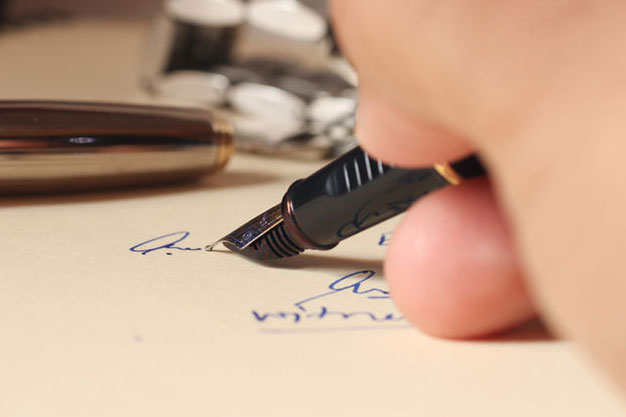Bow Hunting
Kemp African Safaris has received the Professional Hunters’ Association of South Africa (PHASA) Bow hunter of the year award for two consecutive years.
Bow hunting in South Africa can be extremely challenging as well as rewarding. If hunters are prepared to work hard, they will be rewarded with some special memories in addition to their hard-earned trophies. We offer bow hunting safaris for all the plains game species on our price list and more experienced bow hunters will be able to take dangerous game during their bow hunting safari.
Some of the bow hunting trophies in South Africa may not be hunted with a bow. These animals are the African elephant, rhinos, and in some provinces, leopard.
Other restrictions apply to animals that need a special tag before they are hunted. The animals that need special tags include, but are not limited to:
- Roan antelope
- Tsessebe
- Caracal
- Mountain zebra
- Sable in some provinces
- Giraffe in some provinces
DURATION
A bow hunting safari should normally be slightly longer than a rifle hunting safari which pursues the same species. When booking one of our packages a general rule of thumb would be to increase the number of days by 30% over that normally advisable when rifle hunting for the same animals. We would recommend a hunt of at least seven days for five trophy animals.
SEASON
Kemp African Safaris can offer bow hunting year-round. It is however suggestion that you plan your bow hunting safari during the South African winter months, from late May to early October. Due to the decrease in available water sources, game movement around waterholes increase greatly. The bush also become sparser, and this makes spotting approaching animals a great deal easier.
METHODS
The hunters’ level of skill as well as preferences will determine the hunting methods used. We gladly accommodate beginner bow hunters along with more experienced bow hunters.
We mostly incorporate the following methods when pursuing animals with a bow:
– Walk-and-stalk
– From blinds at waterholes
– From Tree stands at game trails
Generally, the most effective way to bow hunt in South Africa is from a blind near or at a waterhole.
A variety of blinds are used, these range from elevated blinds in strategic areas to ground blinds. Tree stands are placed strategically along game paths.
Walking-and-stalking is one of the most exciting ways to hunt, however you may harvest fewer trophies as when hunting from a blind. We suggest that you should do some of both. This will give you a chance to see and experience more of South Africa.
BOWS
What is the best bow for hunting in South Africa?
This is a question often posed by bow hunters wanting to go on their first South African bow hunting safari. The best bow for bow hunting in South Africa is by far the one you are confident and comfortable with. It does not matter if you hunt with a compound bow, longbow or with traditional archery equipment, spend time on the practice range honing your skills before commencing on your safari.
If your bow is manufactured by Bowtech, Diamond, Mathews, G5 or Hoyt, it does not matter. Know your bow and make sure you hit at point of aim. It is also important to ensure that your accompanying equipment is suitable for the animal you intend hunting. Take a quiver that holds at least 6 arrows. Running out of arrows is embarrassing. African animals are tough!
The three types of bows which are legally permitted in South Africa are the compound, re-curve and longbow, with the compound bow being the choice of most international sportsmen who pursue the game of South Africa with a bow.
BROADHEADS
Mechanical broad heads vs fixed blade broad heads.
This is sure to be a somewhat controversial topic, as each hunter probably has his or her own preference. Both of these have their place in the African bow hunting scenario, and the best broad head is the one that works for you.
Kudu are South Africa’s third largest antelope and can be bow hunted with mechanical broad heads with confidence. It is our experience that with the larger the animal we typically prefer you bow hunt with a fixed blade rather than with a mechanical. This is mainly due to the mass and toughness of the animal. Therefore, we recommend that Roan and Eland be hunted with fixed blade broad heads. All South African antelope species can be hunted with fixed blade broad heads.
Our experience and preference favours fixed blades as they have proven to be the most effective when pursuing African game.
When hunting dangerous game, with a pre-issued permit to do so, it is required by law that you must use a fixed blade broad head. Please note that it is prohibited by South African Law to bow hunt Rhino & African Elephants.
ARROW SPEED VS KINETIC ENERGY (KE)
This is where debates can become extremely heated. Before we get into any major debates, it is our recommendation to use a combination between speed, arrow weight, the best broad head and kinetic energy (KE).
DRAW WEIGHT AFRICAN GAME
Below is a list of the recommended draw weights for bow hunting African game in South Africa.
The guide is based on the following:
- the body mass of the animal
- the arrow having a minimum mass of 7,5 grains / lb draw mass
- a minimum two bladed, steel cutting edged broad head of minimum 28 mm width (1,1”).
- With compound bows delivering more kinetic energy (KE) as they develop, the draw weight information below can be used as a guideline.
DRAW WEIGHT – PLAINS GAME
Bushbuck
Draw weight: 55 lbs.
Average shot distance: 20 – 30 yards
KE: 50 ft / lbs.
Duiker
Draw weight: 40 lbs.
Average shot distance: 20 – 30 yards
KE: 40 ft / lbs.
Eland
Draw weight: 95 lbs.
Average shot distance: 25 – 30 yards
KE: 60 ft / lbs.
Gemsbok
Draw weight: 70 lbs.
Average shot distance: 20 – 28 yards
KE: 60 ft / lbs.
Giraffe
Draw weight: 95 lbs.
Average shot distance: 30 – 35 yards
KE: 95 ft / lbs.
Impala
Draw weight: 55 lbs.
Average shot distance: 20 – 30 yards
KE: 50 ft / lbs.
Jackal
Draw weight: 40 lbs.
Average shot distance: 18 – 25 yards
KE: 40 ft / lbs.
Kudu
Draw weight: 70 lbs.
Average shot distance: 20 – 35 yards
KE: 60 ft / lbs.
Nyala
Draw weight: 70 lbs.
Average shot distance: 18 – 25 yards
KE: 50 ft / lbs.
Ostrich
Draw weight: 55 lbs.
Average shot distance: 18 – 30 yards
KE: 70 ft / lbs.
Red Hartebeest
Draw weight: 70 lbs.
Average shot distance: 20 – 25 yards
KE: 60 ft / lbs.
Roan Antelope
Draw weight: 70 lbs.
Average shot distance: 25 – 30 yards
KE: 70 ft / lbs.
Sable
Draw weight: 70 lbs.
Average shot distance: 18 – 25 yards
KE: 60 ft / lbs.
Steenbok
Draw weight: 40 lbs.
Average shot distance: 18 – 25 yards
KE: 40 ft / lbs.
Warthog
Draw weight: 55 lbs.
Average shot distance: 18 – 25 yards
KE: 60 ft / lbs.
Waterbuck
Draw weight: 70 lbs.
Average shot distance: 20 – 25 yards
KE: 60 ft / lbs.
Zebra – common
Draw weight: 70 lbs.
Average shot distance: 20 – 25 yards
KE: 60 ft / lbs.
Zebra – Mountain
Draw weight: 70 lbs.
Average shot distance: 20 – 25 yards
KE: 60 ft / lbs.
DRAW WEIGHT – DANGEROUS GAME
Bow hunting African dangerous game has strict legal prescriptions with regards to minimum draw weights. Never use a mechanical broad head for bow hunting Cape buffalo. The sheer body mass of a Cape buffalo will limit the penetration of mechanical broad heads to the extent the vitals will not be reached. You are welcome to use mechanical broad heads for bow hunting lions and leopard. Lions and leopard are considered soft-skinned animals. Elephant and rhino may not be bow hunted in South Africa
Below is a list of the recommended draw weights for Africa dangerous game:
Cape buffalo - bulls and cows
Draw weight: 95 lbs.
Average shot distance: 25 – 30 yards
35 – 45 yards (walk-and-stalk)
KE: 80 ft / lbs.
African elephant
Illegal to bow hunt in South Africa
Hippopotamus
Tags no longer available
Leopard
Illegal to bow hunt in South Africa
Lion - males and females
Draw weight: 95 lbs.
Average shot distance: 40 – 55 yards
40 – 55 yards (walk-and-stalk)
KE: 60 ft / lbs.
Black or White rhino
Illegal to bow hunt in South Africa
DOCUMENTATION
The three types of bows which are legally permitted in South Africa are the compound, re-curve and longbow.
No legal documents are required when importing a bow into South Africa.
BOW HUNTING REGULATIONS IN SOUTH AFRICA
This is a summary of the bow hunting regulations in South Africa:
CHAPTER 4
CATEGORIES OF HUNTING as published in the Government Gazette, 11 DECEMBER 2009 No.32798 29
Permissible bows for bow hunting in South Africa – What bow can I use for bow hunting South Africa?
The following are acceptable types of bows for bow hunting South Africa-
(a) longbow;
(b) recurve bow; and
(c) compound bow, excluding a compound crossbow.
Categories of wild animals for bow hunting South Africa
The following norms apply to the hunting of wild animals with bow and arrow
Category 1
(a) small game including game birds, small carnivores, hares, hyraxes*, rabbits and pygmy antelope
*hyrax (Procavia capensis) is another name for the common dassie or rock rabbit.
Category 1 bows require:
(i) bow with a minimum draw mass of 40 pounds;
(ii) bow generating a minimum kinetic energy 30 ft/lbs; and
(iii) minimum arrow weight of 300 grains;
Category 2
(b) medium game including: impala, blesbuck, warthog, bushpig, springbuck and nyala
Category 2 bows require:
(i) bow with a minimum draw mass of 50 pounds;
(ii) bow generating a minimum kinetic energy 50 ft/lb; and
(iii) minimum arrow weight 400 grains;
Category 3
(c) large game including wildebeest, kudu, gemsbok, zebra, waterbuck, sable and hartebeests (sic)
Category 3 bows require:
(i) bow with a minimum draw mass of 60 pounds;
(ii) bow generating a minimum kinetic energy of 60 ft/lbs; and
(iii) minimum arrow weight of 500 grains;
Category 4
Cape buffalo
Category 4 bows require:
(i) bow with a minimum draw mass of 80 pounds;
(ii) bow generating a minimum kinetic energy of 80 ft/lb; and
(iii) minimum arrow weight of 750 grains;
Category 5
Giraffe
Category 5 bows require:
Government Gazette, 11 DECEMBER 2009 No.32798 29
(i) bow with a minimum draw mass of 90 pounds;
(ii) bow generating a minimum kinetic energy of 90 ft/lbs; and
(iii) minimum arrow weight of 750 grains.
Additional norms for bow hunting equipment
28. Notwithstanding the requirements contemplated in Paragraph 27 the following conditions apply-
(a) in the case of mechanical broad heads 5% additional kinetic energy is required for Category 1, 2 and 3 wild animals;
(b) broad heads must have at least two cutting edges; and
(c) the minimum permitted arrow length is 50 cm.
29. These norms and standards are called the National Norms and Standards for the Regulation of the
Hunting Industry, 2009, and take effect on a date determined by the Minister in the Gazette.
GENERAL REMARKS
Aim forward from where you would aim when hunting North American game. When the pressure is on, we all revert to our ingrained habits. Many trophies have been lost from a shot that was just a little bit back!
If you make a bad shot, get over it!
Yes, it is expensive paying for bad shots, but don’t let one shot ruin an otherwise fabulous safari
Most importantly of all, don’t sweat pushing for the biggest trophy for every species. Many hunters to South Africa regret not taking a deep breath and absorbing it all in. Drop your tape measure and pick up your camera. Relax and enjoy Africa. It just doesn’t get any better than this!
Additional Information
We offer some information which we consider essential to planning your safari.

Terms and Conditions

FAQ

Hunting Prices

